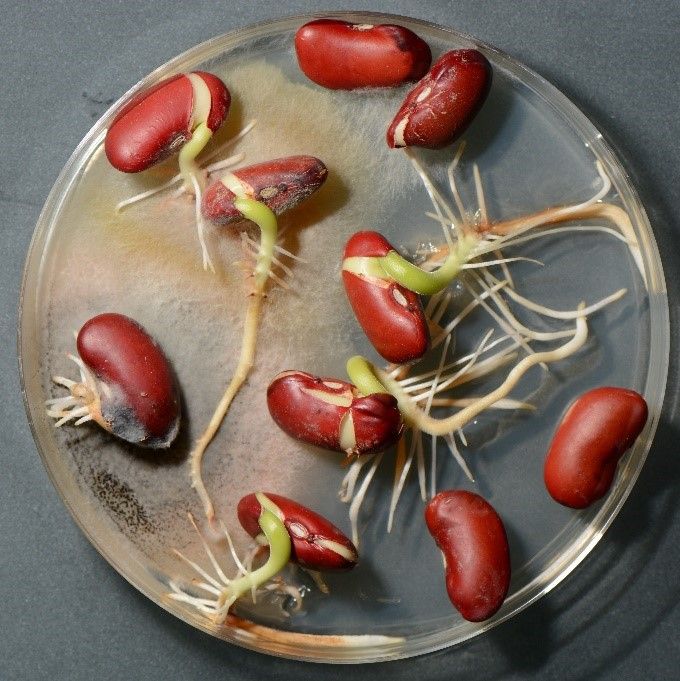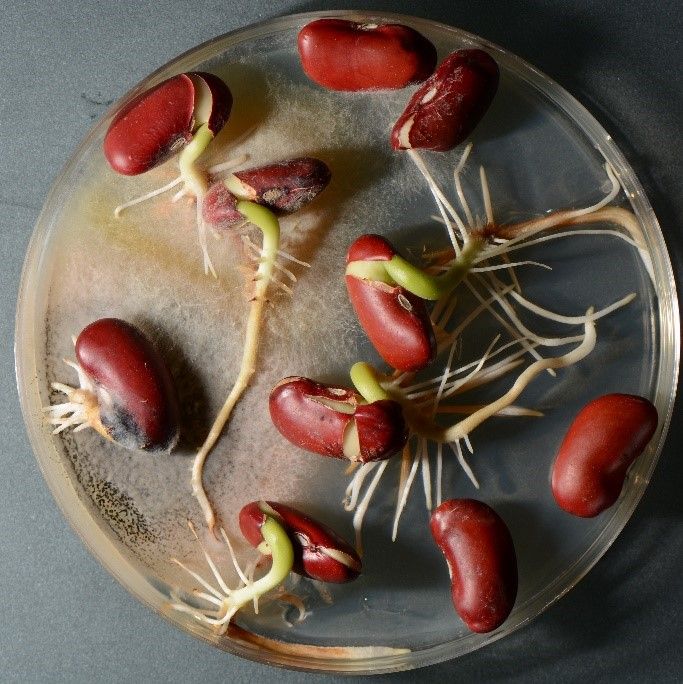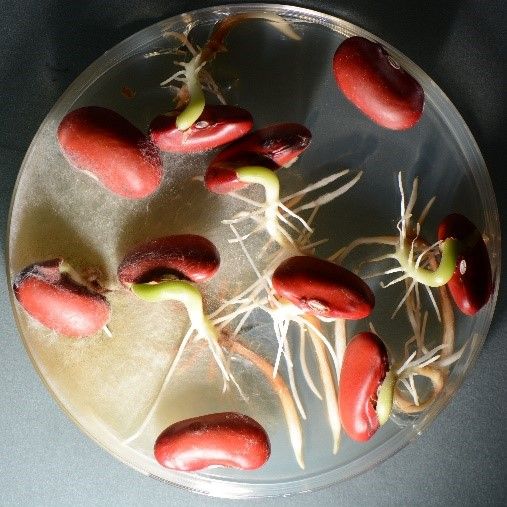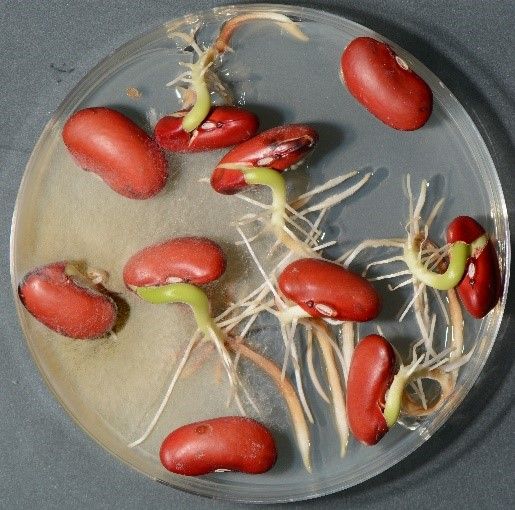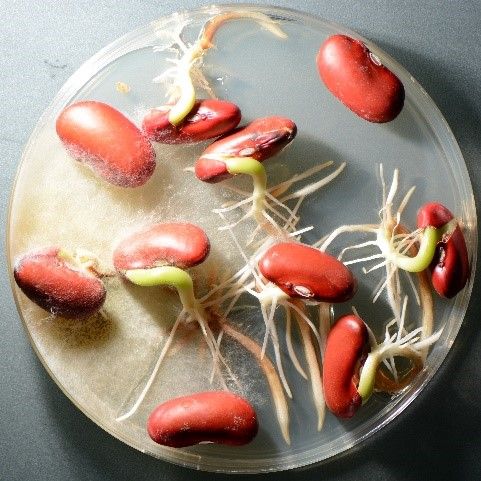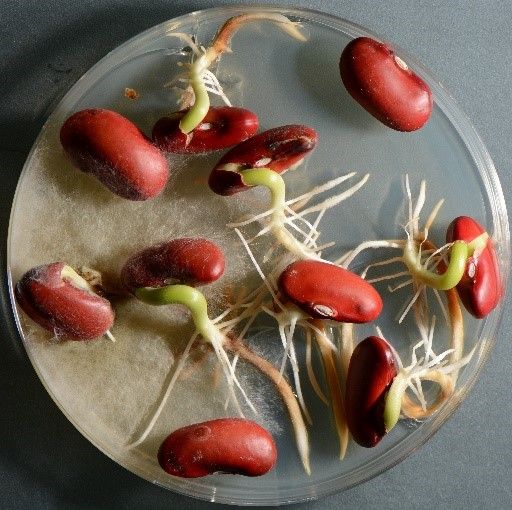How to take an image of a fungal colony
This is a collection of experience based tips. If you are unfamiliar with taking pictures of fungal colonies, we strongly recommend to read through this article for the best results.
1. Camera Quality
Camera quality plays an important part in capturing quality images of plant pathogens. Great cameras allow for much more nuanced focusing, they also allow for you to zoom in to great detail. However, you can still take a bad picture with a nice camera! If you do not have access to a high quality camera, it is still possible to take usable images with some camera phones. We will only display on our website what our plant pathologist team agrees to be the ‘best’ image set for a pathogen, so we can maintain a high quality resource for you!
Here are four images from a high quality camera, where the focusing has been adjusted. You can see how much of a difference it makes! Do you notice the focus being on the seed versus the fungal colony? Can you see the fungal colony characteristics when the focus is wrong? The angle of the flash has also been adjusted slightly, which we will talk about in the next section.
2. Lighting matters
Finding the right light angle can be very tricky! You do not want the light to be behind the camera, or you will see a shadow on your agar plate. It should be between the camera and the agar plate. Sometimes it can be advantageous to show a little bit of shadow (ie, have the camera flash held at a non-linear angle to the camera), especially when highlighting certain aspects of fungal hyphae. You can only adjust this, if the flash is able to be detached from the camera, otherwise attached to the camera is fine!
3. Background matters
There is no correct color for background, as it often depends on what you are trying to showcase, but choose a background that is matte (shiny backgrounds throw too much light back at the camera and are distracting). If you are showcasing white hyphae, especially the leading edges of colonies and their growth characteristics, then a white background will not showcase any contrast, so a dark black or gray is more useful. If you are showcasing agar staining, then a white or gray background would be more suitable. Typically a strongly or brightly colored background (like blue) can be distracting, and a more neutral color would be better suited.
